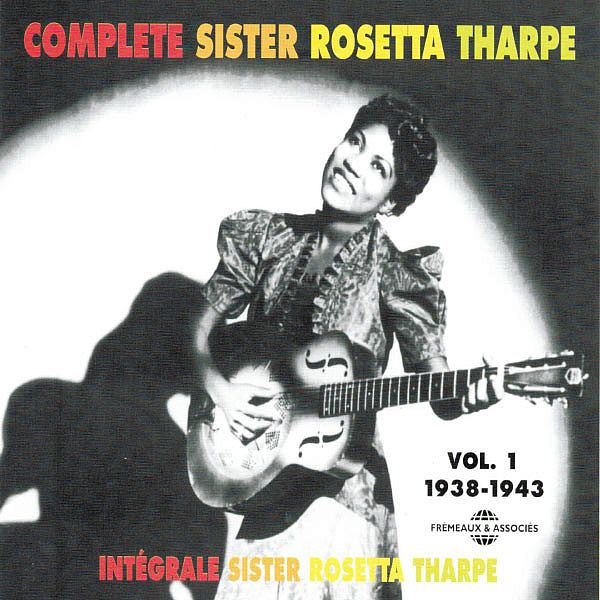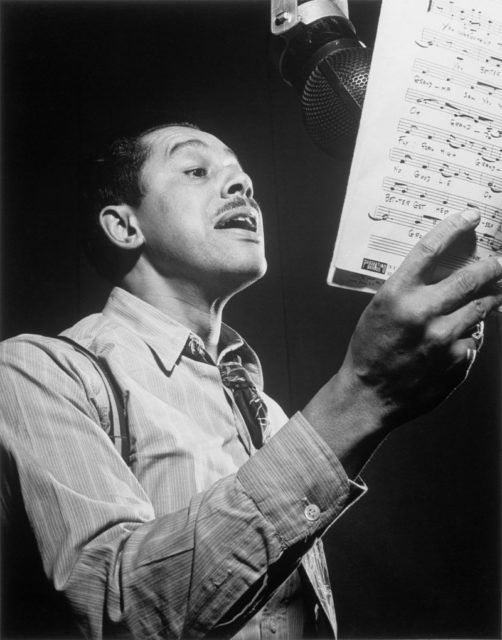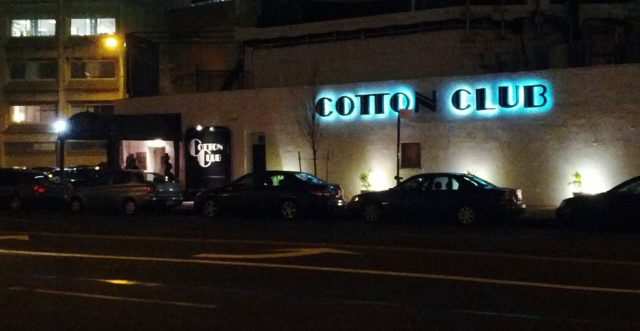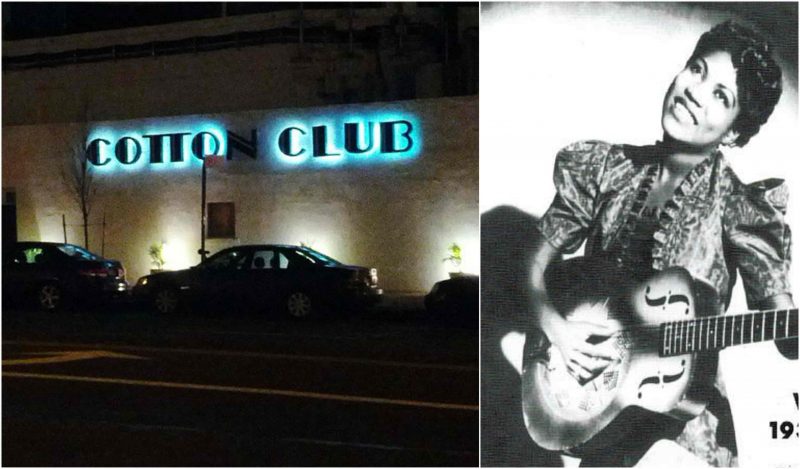At a time when the guitar was linked to men and gospel music was purely religious, Sister Rosetta Tharpe managed to outplay many men with her guitar and to attract large audiences with her gospel-based lyrics, accompanied by secular-sounding music. Yet during her lifetime, she was rarely praised for her perseverance and her ability to break through any gender, musical, religious, or racial barriers. In fact, she was shunned by many members of the gospel community while the critics paid her no greater compliment than she was “almost playing like a man.”
Not much is known about Sister Rosetta’s childhood, but some researchers believe her father was a singer, as was her mother, Katie Harper, who was also a mandolin player. Tharpe was born in 1915 as Rosether Atkins, and as a child, she accompanied her evangelist mother at COGIC–Church of God in Christ–where Katie Harper preached. The church was founded by Charles Harrison Mason in 1894. Mason encouraged women to preach in the church.

At the age of four, Rosetta learned how to play the guitar and started singing. She was known as Little Rosetta Nubin and thought of as a musical prodigy. When she was six, Little Rosetta was already performing regularly with her mother in a traveling evangelical troupe, mostly across the South. When Tharpe was around the age of 10, she moved with her mother to Chicago, where they performed religious concerts at the COGIC church.
When she was 19, Tharpe married a COGIC preacher, Thomas Thorpe, who accompanied Rosetta and her mother on their frequent tours. The marriage lasted barely four years, and she married several times after that, but Rosetta adapted her first husband’s name as her stage name and performed as Sister Rosetta Tharpe for the rest of her life. In 1938, when she was 23, Sister Rosetta left her husband and moved to New York City along with her mother.
After relocating to New York, Sister Rosetta recorded for the first time and all four of her songs–“That’s All,” “The Lonesome Road,” “My Man,” and “Rock Me”–were instant hits. The songs were recorded for Decca Records and backed by Lucky Millinder’s jazz orchestra. Those were the first gospel songs ever recorded by Decca. Tharpe established her name, and they made her one of the few gospel artists who had commercial success with their records at the time. However, the more popular she became, the less approval her music received from the gospel communities.
Her distinct style, lyrics inspired by gospel and music with a secular sound, were two things that weren’t “supposed to mix.” However, secular audiences enjoyed Tharpe’s music. On several occasions, she performed with the Jordanaires, a white singing group. In the meantime, she also signed a contract with Reminder for seven years and was managed by Mo Gayle.

Some famous acts that Tharpe performed with and brought her more fame: the concert at the Cotton Club in Harlem with Cab Calloway in October 1938, and John Hammond’s “Spirituals to Swing” concert held on December 23, 1938, at Carnegie Hall.
At the end of the 1940s, Tharpe’s fame took a downhill turn. Mahalia Jackson was shadowing Tharpe’s popularity, and Knight, who suddenly expressed her desire for a solo career, lost her mother and children in a fire. That same year, Tharpe put on a concert, and it was the first time that she was supported by the Twilight Swingers, whom she adopted as her regular background singers for all her shows and named them The Rosettes.
Tharpe’s appearance at these concerts was revolutionary in several different ways. First of all, she performed, in nightclubs, gospel music that hadn’t before left the walls of the church. And she was followed by jazz and blues musicians. And dancers, too.
And, of course, she was a woman: It was an unusual thing to see a woman with a guitar in her hands. Moreover, she was black. Sister Rosetta and her music were a mixture that broke many barriers. Audiences were for the first time exposed to the rhythm of gospel music, and they loved it.

During World War II, Tharpe was one of two gospel artists recording V-discs for the overseas troops. In 1944, she recorded one of her masterpieces, “Strange Things Happening Every Day,” along with the boogie-woogie pianist Sammy Price from the Decca label. It was the first gospel song to get on Billboard‘s Harlem Hit Parade Top Ten. And it wasn’t her last song to reach that list. The hit has been credited by some as the first rock & roll record. Throughout the 1940s, Tharpe toured with various musicians, including the Dixie Hummingbirds.
It was 1946 when Tharpe saw Marie Knight performing for the first time. Recognizing an exceptional talent in the girl, Tharpe went to Knight’s home two weeks later and invited her to hit the road. For many years the duo toured, playing and recording gospel music. During their years together, they recorded hits such as “Gospel Train” and “Up Above My Head.” It was speculated that the two musicians were having a romantic relationship, though the two of them denied it as a gossip.
In 1964, Sister Rosetta toured Europe along with Brownie McGhee, Cousin Joe, and Sonny Terry, Reverend Gary Davis, Ransom Knowling, Little Willie Smith, Otis Spann, and Muddy Waters. They were all part of the Blues and Gospel Caravan performing in front of a European audience that was “crazy” for the blues. Tharpe had great success in Europe, where audiences enjoyed her performances. During this trip, she held one of those concerts that go down in musical history as a moment of “musical nirvana.” It was in Manchester, in the rain, at the railway station at Wilbraham Road that was out of use at the time. It was even recorded by Granada Television. The band performed on one platform while the audience watched from the opposite platform.
In 1970, Tharpe had a stroke, and due to complications from diabetes, she had one of her legs amputated. She had to cancel many concerts, and her health worsened. Three years later, on October 9. 1973, Tharpe had a scheduled recording session in the evening but died that day of another stroke. She was 58.
Related story from us: Charlie Chaplin allegedly entered a Chaplin look-alike contest and lost
Considering how young she was when she started singing and playing the guitar one can say that she spent her whole life with music. She was an extraordinary artist whose music influenced many musical genres and inspired many great artists such as Elvis Presley, Jerry Lee Lewis, and Little Richard.
